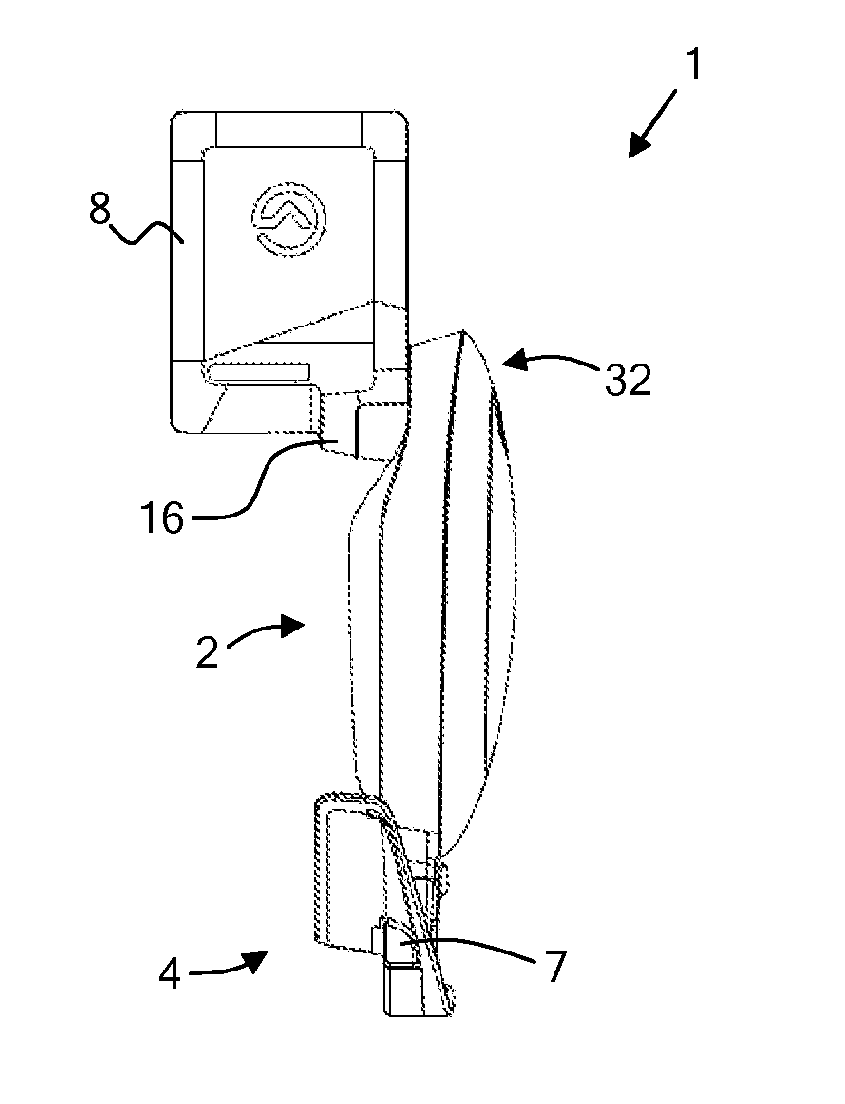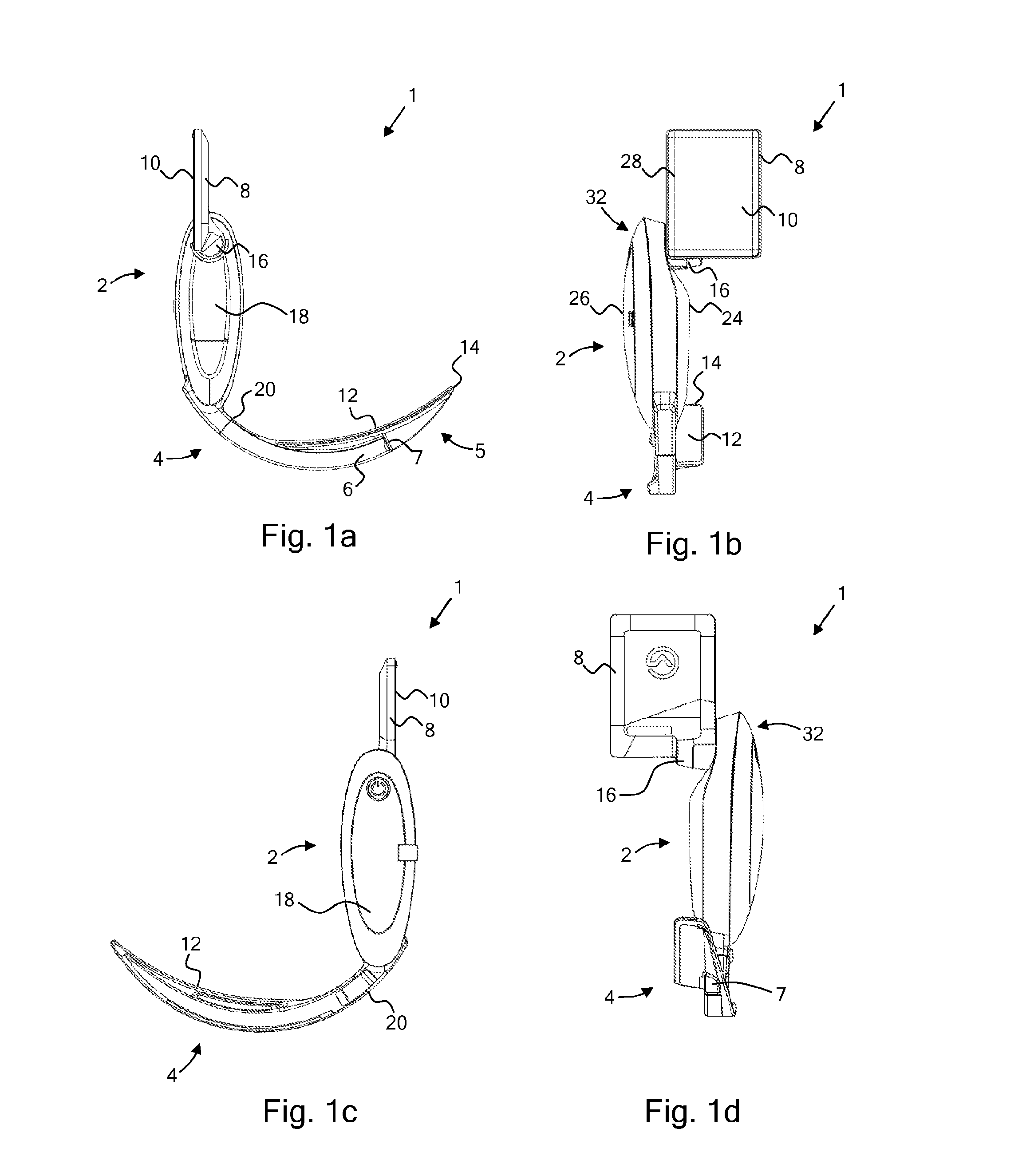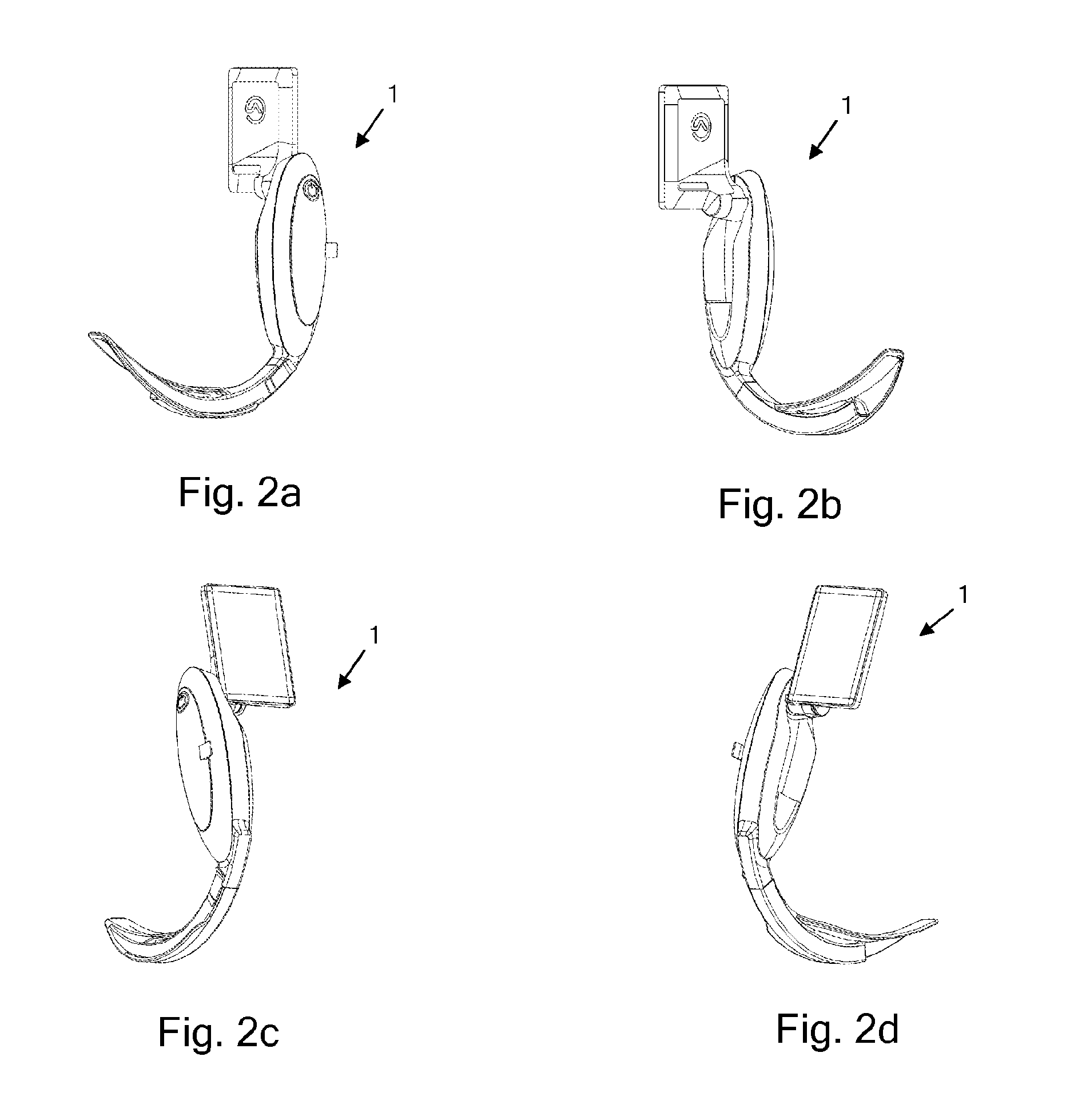Video laryngoscope
a laryngoscope and video technology, applied in the field of video laryngoscopes, can solve the problems of increasing the overall size of the device, affecting the operation of the laryngoscope, and being difficult to manoeuvre than the traditional laryngoscope, so as to facilitate fine reduce the movement of the head, and increase the control of the laryngoscope manipulation.
- Summary
- Abstract
- Description
- Claims
- Application Information
AI Technical Summary
Benefits of technology
Problems solved by technology
Method used
Image
Examples
Embodiment Construction
[0065]FIG. 1 shows a video laryngoscope 1 comprising a body 2 and an insertion section 4 extending from the body. A display screen assembly 8 is connected to the body comprises an LCD display screen 10 which is oriented generally perpendicular to the plane of the insertion section, as can be seen most clearly in FIGS. 1b and 1d.
[0066]The insertion section comprises a distal portion 5 for manipulating the tissues of a patient's trachea, epiglottis or larynx, and a camera element 6 extending through a channel in the insertion section to a lens 7. An image obtained by a camera at the distal end of the camera element, adjacent the lens, is operable to capture an image, to be displayed on the screen and thereby provide an indirect view of a patient's oral cavity (and in particular the epiglottis, trachea or larynx) in use.
[0067]The insertion section further comprises an inferior surface, which, in use, is engaged with a patient's tongue. The inferior surface of the embodiments shown is ...
PUM
 Login to View More
Login to View More Abstract
Description
Claims
Application Information
 Login to View More
Login to View More - R&D
- Intellectual Property
- Life Sciences
- Materials
- Tech Scout
- Unparalleled Data Quality
- Higher Quality Content
- 60% Fewer Hallucinations
Browse by: Latest US Patents, China's latest patents, Technical Efficacy Thesaurus, Application Domain, Technology Topic, Popular Technical Reports.
© 2025 PatSnap. All rights reserved.Legal|Privacy policy|Modern Slavery Act Transparency Statement|Sitemap|About US| Contact US: help@patsnap.com



